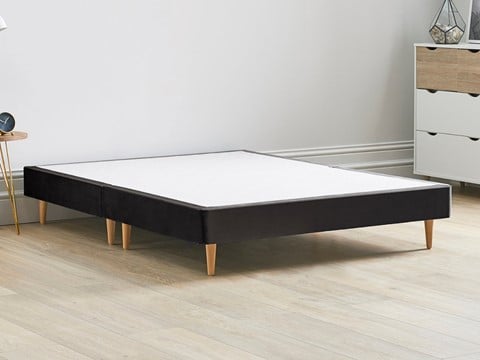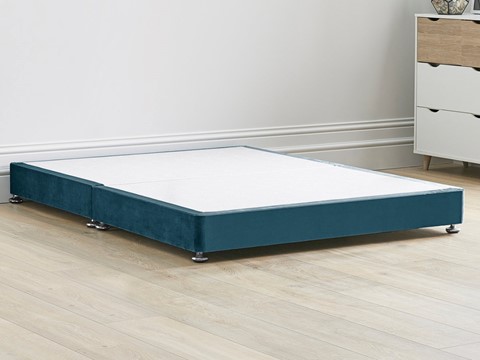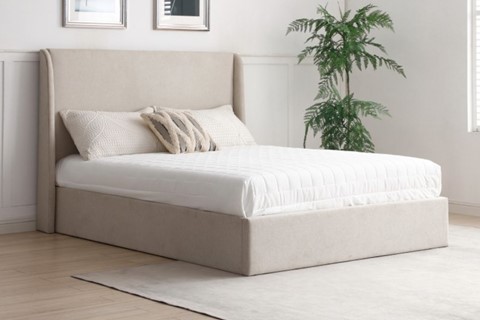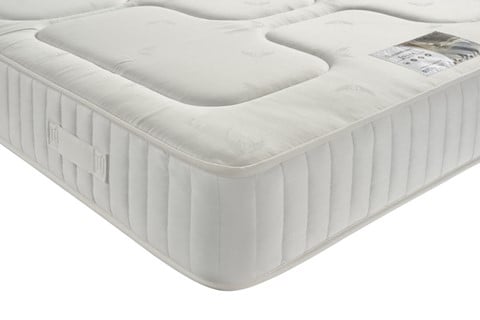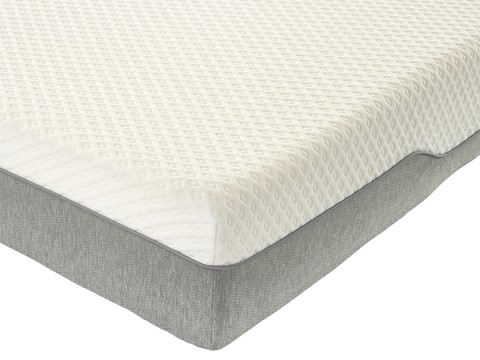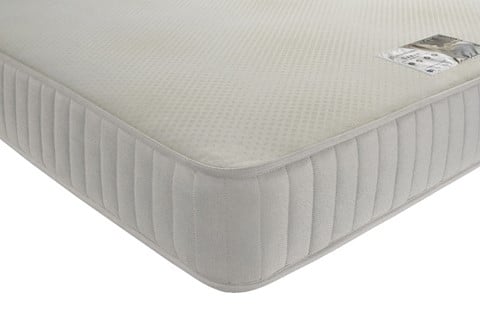King vs Super King: Do You Really Need the Extra 30 cm?
When you’re choosing a new bed frame, an extra 30 cm might not sound like much—until you’re the one clinging to the edge at 3 a.m. In the UK, the jump from a King (150 × 200 cm) to a Super King (180 × 200 cm) is the biggest step‑up in horizontal space you can make without venturing into bespoke territory, and it sparks the same debate in bedrooms up and down the country: is the luxury worth the footprint and the price tag?
In this guide we’ll break down the hard numbers, show you how each size fits into a typical British bedroom, and weigh up the real‑world pros and cons for couples, families and restless sleepers alike.
By the end you’ll know whether that extra 30 cm buys genuine comfort or just eats into your walk‑around space—and you’ll have a clear plan for picking the bed that suits your room, budget and lifestyle.
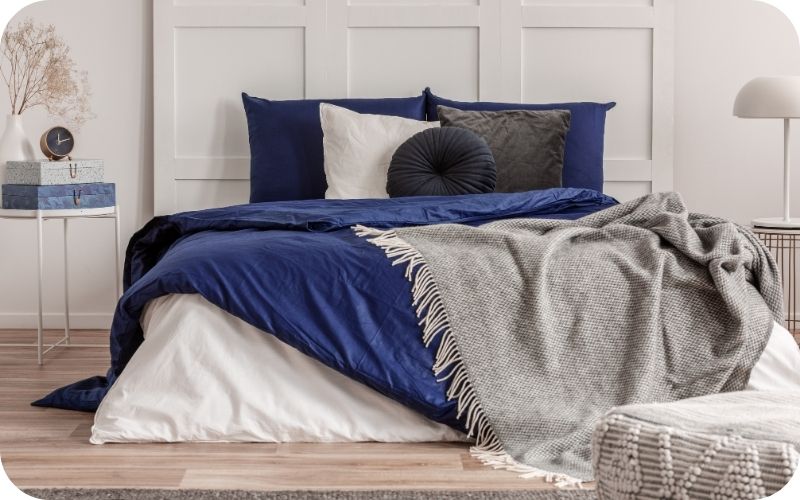
Exact Dimensions at a Glance
Below is the hard data that separates a standard UK King from a Super King. Keep it handy when you’re standing in the bedroom with a tape measure—or browsing bedding online.
|
Bed size |
Metric dimensions (W × L) |
Imperial dimensions |
Extra width vs King |
|
King |
150 cm × 200 cm |
5 ft 0 in × 6 ft 6 in |
— |
|
Super King |
180 cm × 200 cm |
6 ft 0 in × 6 ft 6 in |
+ 30 cm (≈ 1 ft) |
What the numbers really mean
- Same length, more elbow‑room: Both sizes are 200 cm long, so tall sleepers won’t gain leg room—only shoulder space.
- 30 cm is one bedside table: Visualise a typical slim bedside table (about 30–35 cm wide). That’s the extra strip of mattress you’d be adding.
- Bedding & accessories scale up too: Duvets, sheets and headboards must match the exact width. We’ll break down the cost implications later.
Need the full UK size chart? Check our master reference, UK Bed Sizes: The Bed & Mattress Size Guide, for every size from Small Single to Super King Size.
With the raw measurements in mind, let’s see how each bed actually fits inside a real British bedroom.
Will It Fit? Measuring Your Bedroom
A super‑luxurious mattress is wasted if you have to shuffle sideways to reach the wardrobe. Use the checklist below before committing to either size.
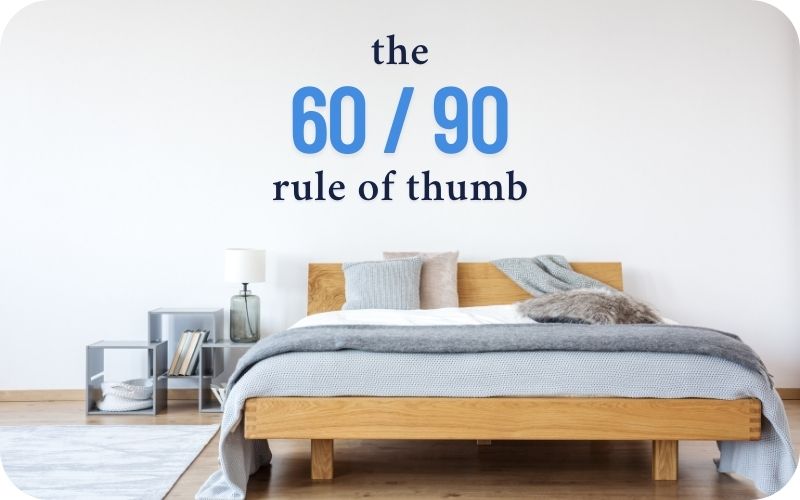
The 60 / 90 Rule of Thumb
|
Clearance zone |
Minimum gap |
Why it matters |
|
Along each long side |
60 cm (about 2 ft) |
Comfortable walk‑way and room to change sheets. |
|
At the foot of the bed |
90 cm (about 3 ft) |
Allows drawers to open and two people to pass without bumping knees. |
Quick maths:
King: 150 cm + 60 cm + 60 cm = 270 cm minimum room width.
Super King: 180 cm + 60 cm + 60 cm = 300 cm minimum room width.
If your bedroom is narrower than those figures, you’ll sacrifice circulation space—or need to push one long side against the wall.
Tape‑Measure Checklist
- Measure wall‑to‑wall width at the narrowest point (skirting‑board to skirting‑board).
- Check door swing and drawers: open the bedroom door fully and pull out any wardrobe or chest drawers; note the clearance.
- Map bedside furniture: a slim cabinet is usually 30–35 cm wide; factor two if you want symmetry.
- Allow for radiators and sockets: mattresses need breathing space for airflow and easy access to plugs.
- Mark the mattress outline on the floor with painter’s tape or old newspaper; live with it for 24 hours.
Comfort & Sleep Quality for Couples
More width, fewer wake-ups
Half of all sleep disturbances among UK couples are caused by partner movement or “bed-hogging.” A Super King gives each sleeper 90 cm of personal space—equivalent to a standard single mattress per person—while a King trims that to 75 cm. The extra elbow-room means you’re less likely to feel every toss and turn, or to cling to the edge at 3 a.m.
Shoulder-width & pressure relief
Average shoulder breadth for UK adults is roughly 45–50 cm. Two sets of shoulders side-by-side leave about:
- King: 30 cm spare
- Super King: 60 cm spare
That surplus width on a Super King lets both sleepers lie flat without “angling” their bodies, reducing pressure on hips and lower back—especially valuable if either partner is a side-sleeper.
Motion isolation matters more on a wider base
Modern pocket-sprung or hybrid mattresses are designed to localise movement; their performance improves on a broader surface because the shockwaves have farther to travel. Pairing a Super King with a high-coil-count pocket spring or latex core will virtually eliminate partner roll-together.
Temperature & micro-climate
More surface area means body heat dissipates faster, helping hot sleepers stay cool. Conversely, couples who like to snuggle can mitigate the chill by opting for a slightly higher tog duvet (e.g., 10.5 tog instead of 9 tog) without feeling stifled.
Room for extras
Many households treat the bed as a family hub—whether that means a toddler padding in at dawn, a spaniel stretching out by your feet, or one partner needing extra space during pregnancy. The extra 30 cm on a Super King can be the difference between everyone settling back to sleep comfortably and one adult perching on the edge. If you already share with kids or pets—or plan to in the future—choosing the wider mattress simply gives you more breathing room, so the odd midnight visitor won’t leave anyone feeling cramped.
Quick takeaway: If partner disturbance is already ruining your nights—or you’re planning for pets, toddlers or pregnancy—upgrading to a Super King delivers tangible comfort benefits that a King can’t match. Otherwise, a high-quality King with good motion isolation can still offer restful couple-sleep in a space-conscious bedroom.
Style & Storage Considerations
1. Visual Proportions in Real-World Rooms
|
Typical UK bedroom type |
King (150 × 200 cm) |
Super King (180 × 200 cm) |
|
Victorian box-room (≈ 2.8 × 3.5 m) |
Fills the space but still leaves room for two slim bedside tables and a chest of drawers opposite. |
Dominates the floor plan; you’ll likely have to forgo one bedside table or push the bed against a wall. |
|
1930s semi master (≈ 3.2 × 3.6 m) |
Balanced, lets you centre a 120 cm headboard beneath the window. |
Feels luxurious yet proportional if you opt for a light, slim-legged frame. |
|
Modern new-build master (≈ 3.8 × 4.5 m) |
Looks slightly modest; great if you want extra floor space for a dressing area. |
Perfect showcase size—lets you pair a statement headboard with matching ottoman bench. |
Tip: A lighter-toned frame or one on tapered legs makes a Super King feel “airier” and prevents the room looking cramped.
2. Under-Bed Storage Options
- Ottoman lift-up bases give you up to 800 L of hidden storage on a King, and roughly 1 000 L on a Super King—ideal for spare bedding and seasonal clothes.
- Drawer divans scale in width, so a Super King can take four full-width drawers (two each side) instead of the two medium drawers common on King divans.
- Clearance height matters: Choose a frame with at least 20 cm floor-to-slat gap if you plan to slide plastic totes or vacuum bags underneath.
3. Headboards & Focal Points
- Width: A King headboard is usually 160 cm edge-to-edge; a Super King, 190 cm+. Measure your wall recesses or alcoves before splurging on a floor-standing, wing-back design.
- Height: Taller headboards (≥ 135 cm) draw the eye upward, balancing the longer width of a Super King and making ceilings appear higher.
- Material cues:
- Upholstered velvet/chenille softens the expanse of a large bed.
- Open-slatted oak or metal keeps things airy in tighter spaces.
4. Bedding & Layering Aesthetics
- A King looks plush with two standard pillows and a 220 × 230 cm duvet casually overhanging.
- A Super King needs three or four pillows plus a 260 × 220 cm duvet to achieve the same hotel-style drape—budget a little extra for accent cushions or a 260 × 240 cm bedspread so the frame doesn’t appear under-dressed.
5. Lighting & Flow
Wider beds leave slimmer walk-ways, so switch from chunky bedside lamps to wall-mounted sconces or pendant drops to free table space. In tight rooms, angle a full-length mirror opposite the window; the reflection of the bed adds depth and light.
Design takeaway:
Choose a King if you value versatile décor, easy furniture placement and lighter visual weight. Opt for a Super King when you have ample square footage and want your bed to be the undisputed centrepiece—then accentuate it with generous bedding layers, taller headboards and clever lighting to balance the proportions.
Thought for a few seconds
Pros & Cons Quick-Reference Table
|
King (150 × 200 cm) |
Super King (180 × 200 cm) |
|
|
Floor-space footprint |
✔ Fits comfortably in most UK main bedrooms✔ Leaves wider walk-ways for wardrobes & doors |
✖ Needs a room at least ~3 m wide to avoid a cramped feel |
|
Ease of delivery & moving house |
✔ Straightforward through standard doorways and stairs |
✖ Big headboards/bases may need split components or a zip-and-link mattress |
|
Cost of frame, mattress & bedding |
✔ Cheaper initial outlay and cheaper replacement sheets |
✖ Around 15-25 % pricier across most items |
|
Resale / spare-room versatility |
✔ Easy to repurpose or sell on |
✖ Harder to shift and rarely fits future guest rooms |
|
Personal sleeping space |
✖ 75 cm each for two sleepers (narrower than a single) |
✔ 90 cm each—practically two singles side-by-side |
|
Partner disturbance & heat build-up |
✖ More edge-hugging and body-heat transfer |
✔ Extra elbow-room and cooler micro-climate |
|
Family- or pet-friendly |
✖ Tight once a child or dog joins |
✔ Space for the occasional midnight visitor |
|
Visual impact |
✔ Balances nicely with most furniture sets |
✔ Creates a luxury, hotel-suite focal point |
Frequently Asked Questions
1. Can two tall adults share a King comfortably?
For sleepers up to about 6 ft 2 in (188 cm) and of average build, a King offers adequate length but gives each person only 75 cm of width—narrower than a UK single. If either partner tosses and turns, or if shoulder-width is above average, a Super King feels noticeably more relaxed.
2. Will a Super King fit in a 3 m × 3 m (10 ft × 10 ft) room?
It will squeeze in, but clearances drop to around 60 cm on the long sides and just 30 cm at the foot—tight for drawers or an ottoman. Aim for a room at least 3 m wide and 3.4 m long for better circulation.
3. Do I need special pillows or duvets for a Super King?
Standard pillows work on both sizes. You will, however, need Super-King-sized duvets (typically 260 × 220 cm) and fitted sheets labelled “Super King” to cover the extra width.
4. Is a zip-and-link Super King worth the extra expense?
A zip-and-link splits the mattress into two 90 cm singles that can be separated for cleaning, rotating or guest use, and makes delivery up staircases easier. It’s a smart choice if you foresee moving house, have tight access, or want different firmness levels on each side.
5. Does a bigger bed improve sleep quality?
Space alone won’t cure insomnia, but extra width reduces partner disturbance and allows freer movement. Paired with a supportive mattress and good sleep hygiene, many couples report fewer night-time wake-ups in a Super King.
Thought for a couple of seconds
Final Thoughts
Upgrading from a King to a Super King is less about the extra 30 cm of timber and fabric, and more about how you value space—both in the bedroom and in bed. If generous elbow-room, cooler sleep and family-friendly sprawl outweigh budget and floor-space constraints, the 180 cm option will feel like nightly luxury. If, however, you’re furnishing a modest room or prefer to invest in mattress quality rather than sheer width, a well-made King remains a brilliantly versatile choice.
Before you click Add to Basket, grab the tape-measure, mark the mattress outline on the floor with painter’s tape or newspaper, and double-check you’ll still have at least 60 cm walk-way on each long side. A bed is the piece of furniture you’ll use more than any other; getting the dimensions right pays dividends every single night.
Ready to find your perfect fit? Explore our King and Super King collections—or dip back into our comprehensive UK Bed Sizes Guide for a refresher on every size from Small Single to Giant Wyoming King.
Sleep well!
